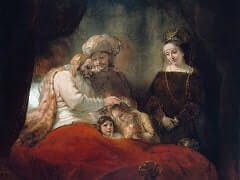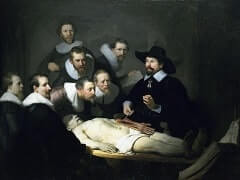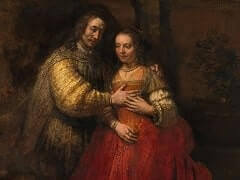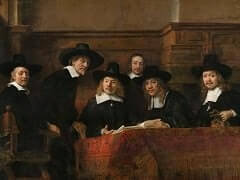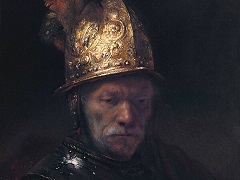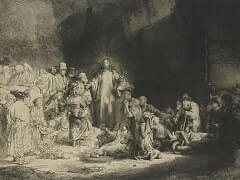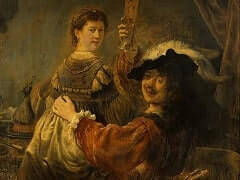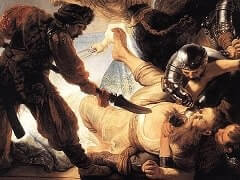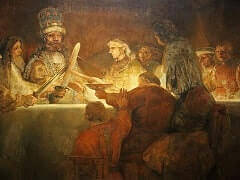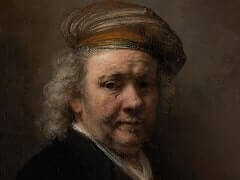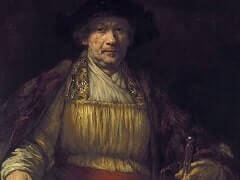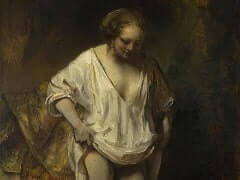Jan Six, 1654 by Rembrandt van Rijn
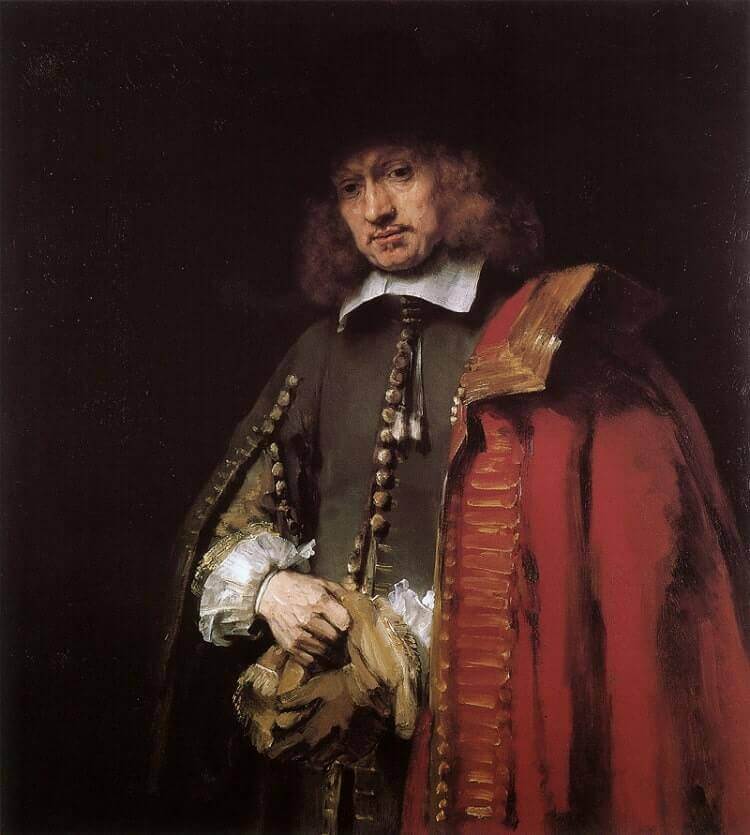
Jan Six (i618-1700) owned and ran a large dye works for cloth and silk in Amsterdam, which his grandfather had founded. In 1652 Six decided to retire from his partnership in the dye works in order to devote himself
exclusively to his duties as a regent, and to his intellectual interests, art collecting and writing verse. In 1691, at the age of 73, Six was burgomaster of Amsterdam for a year. He lived in a handsome house on
the Kloveniersburgwal, and had a country retreat on the Amstel.
Rembrandt produced a number of works for Six. In 1647 he made a full-length portrait etching of him, standing by a window with a book in his hands. The next year he etched an illustration for Medea, a play by Six,
representing Jason's marriage to Creusa. In 1652 Rembrandt sold Six three paintings which he had made in the 1630s, a portrait of Saskia and two religious pictures. In the same year Rembrandt twice made a contribution
to Six's Album Amicorum (Book of Friends) which seems to indicate that there was more than a business relationship between them.
When Rembrandt needed money in 1653 to pay his creditors, Jan Six was one of those who lent to him, providing 1000 guilders. Just a year later Rembrandt painted this portrait of Jan Six, perhaps to pay off his debt in kind.
The portrait of Jan Six has been called the most beautiful portrait ever painted, combining style with psychological insight. Jan Six is 36 years old, a man of the world, well read and with wide interests. The portrait is
not static, but catches Six in a moment of action: he has just drawn on his left glove, and gives the impression of being on the point of departure. Rembrandt has reinforced the impression of immediacy by the manner in
which he painted the picture, quickly and confidently. The gold embroidery on the red coat is just a series of strokes of paint, done with a broad brush; the glove shows little detail, whereas the right hand is strikingly
rendered, even the tension in the hand necessary to draw on the glove is made visible.
The attitude of the head is not that of any ordinary sitter: Jan Six is looking at the observer rather enquiringly, his head slightly on one side, without posing or vanity, but with the justified hesitation of someone
encountering a stranger. Because the portrait is approximately life-size, the spectator inevitably feels as if he or she were face to face with a living man. This is Rembrandt at his best, a portrait that is true to life
without being a accurate reproduction in all its details.
After more than three centuries, the portrait is still in the ownership of Six's descendants.




